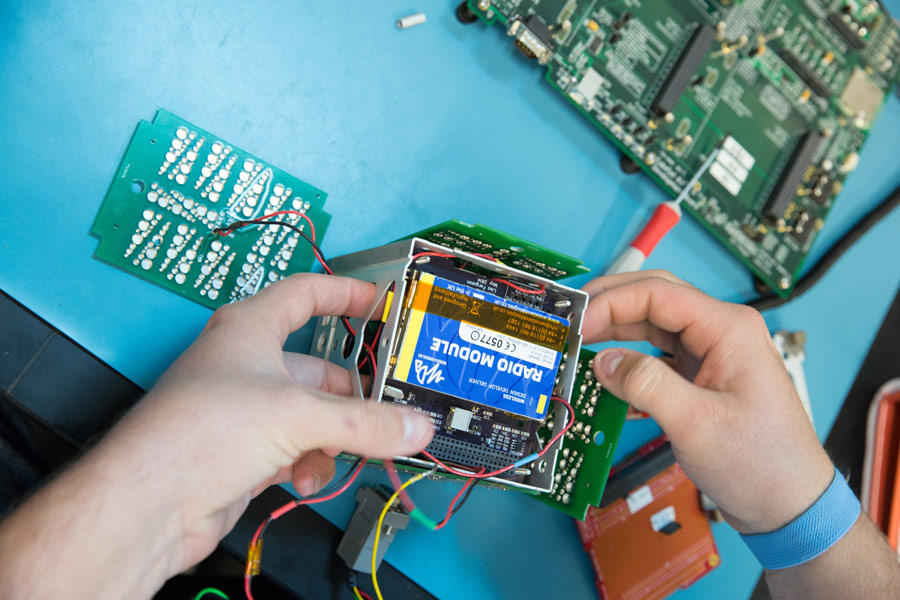On Nov. 18, 2017, engineering students at the Prescott Campus watched as a project five years in the making became a reality. EagleSat-1, a student-designed cube satellite (CubeSat), was launched into space — making it the first Embry-Riddle satellite to orbit Earth.
EagleSat-1 was able to hitch a ride aboard the second stage of the Delta II rocket carrying the JPSS-1 weather satellite for the National Oceanic and Atmospheric Administration, thanks to NASA’s Educational Launch of Nano-satellites program. The competitive initiative offers universities a low-cost pathway to launch experiments and conduct research in space.
The mission of EagleSat-1 is to study the satellite’s orbital decay and demonstrate the use of super capacitors for power rather than traditional rechargeable batteries. The Embry-Riddle EagleSat team estimates its CubeSat will be in orbit between seven to nine years.
As of January, the EagleSat team had been unable to contact EagleSat-1 from its ground station on campus. It is, however, being tracked by NORAD, which monitors human-made objects in space. Efforts to contact it will continue this spring. The team has already started to develop a second CubeSat: EagleSat-2.
The current team consists of Steven Buck, Deborah Jackson, Jon Lowe, Madison Padilla and Gary Yale, associate professor of aerospace engineering. About 35 Prescott Campus students have contributed to the EagleSat-1 project over the past five years.
“The students worked incredibly hard to make this day happen,” Yale says. “We are all proud of what they’ve accomplished.”
